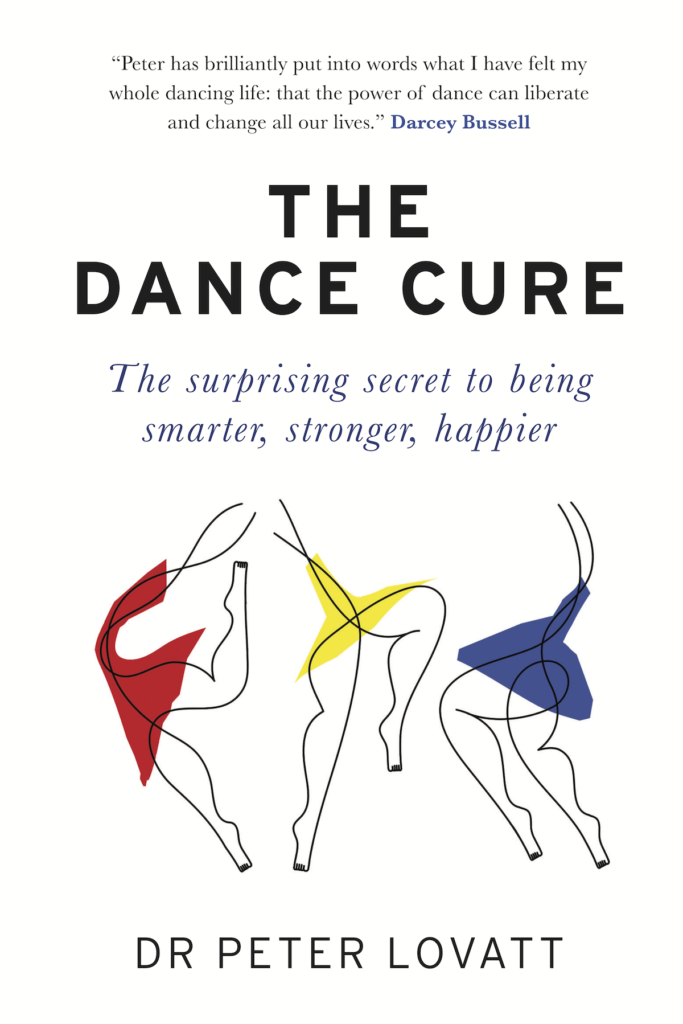
“There’s a tension between producing a new Darcey Bussell, and also protecting the psychological wellbeing of all of the people who pass through the school.” Peter Lovatt was interviewed by Hattie Crisell for an article on body image in ballet.

Can Ballet Be Body-Positive?
by Hattie Crisell
first published in The Pool on 16th July 2016
I was three years old, painfully shy and totally uncoordinated when I started ballet classes. I’m not an athletic person – later, I would fake period pain every week in an attempt to avoid swimming or PE – but, thanks to those classes, I always danced. I attended ballet two or three times a week for about 15 years, and it taught me to stand up tall and take control of my unruly arms and legs; it gave me pride in my body as a functional machine. I cared about alignment and extension – I cared enough to point my feet so hard that my knees almost bent backwards. I’m one of many women who never had a shot at being a ballerina, but who were indelibly marked by the dance training they had as kids.
People often think that the fanatical love inspired by ballet is about little girls wanting to be princesses – the dream of going up on stage in the sparkling tutu. It wasn’t about that for me. I think, instead, it tapped into my need for both self-expression and self-control. Dancing, when you know what you’re doing, feels divine – in the spiritual, close-to-God sense. Flying across a studio in a grand jeté is liberating, but there’s also an exhilaration in unfolding your leg into a mid-air developée, lifting your whole body into an arabesque or nailing an immaculate pirouette. Somehow, it tastes better because it’s such hard work.
That can be no surprise to anyone who’s seen Black Swan or Fame or the excellent documentary First Position. Much of the pop culture around dance focuses on its relentless training and the sacrifices involved – ballet is about practising a movement again and again and again, pushing through frustration and discomfort until it’s flawless. Traditionally, it’s been taught with an almost sadomasochistic rigour, which demands unconditional dedication, unwavering discipline and the “right” kind of body: lean, long-legged and free of anything that jiggles. This side of the experience is a long way from the tutu fantasy; it can be an overwhelmingly competitive, ambitious environment. I still love ballet, but I can’t be the only adult whose memories of that time are complicated. I can’t be the only one who occasionally has anxiety dreams that take me back to a mirror-lined studio.
Of all the amateur dancers I know, Natasha perhaps made it closest to becoming a ballerina. When she was 10, she won a scholarship that allowed her to go to London every other weekend to train with a professional company. Then, at 14, she hit puberty. “I went from being a little kid, with a lollipop head on a stick body, to all of a sudden having womanly curves,” she remembers. “That year, the scholarship ended – not because of anything to do with my talent, but because my body had changed, and I think they could see, at that point, that I wasn’t going to have a dancer’s frame. It was devastating.”
Back home in her ballet classes, her body continued to be an issue; she wasn’t fat, but she had breasts and hips. “I remember being told to lose weight by my dance teacher constantly,” she says. “It would always be done from the point of view of, ‘It’s easier to hold the line if you’ve got less weight on’ – so, say for example if you’re holding an arabesque, it’s much easier to get the leg up if there’s less bum there. I had no idea about nutrition or how to lose weight, so I started smoking. It wasn’t to be cool – it was to try and not eat.”
When I relay this story to Erin Sanchez, she is sad but not surprised. She’s co-manager of the Healthier Dancer programme at One Dance UK, an organisation that supports the mental and physical wellbeing of dancers, and offers training to dance teachers. In recent years, she says, significant research has been done into old-fashioned styles of teaching, and how they affect students: “The indication is that, in competitive environments, in environments where mistakes are punished, in environments where there’s a focus on excellence – there is a much higher incidence of body dysmorphic disorder, eating disorders, weight-related problems and what they call ‘contingent self-esteem’: the idea that your self-worth is based on how other people think about you.”
I never experienced the first three on this list, but contingent self-esteem sounds uncomfortably familiar – there was nothing more mortifying than being singled out for criticism. And yet I always thought the strictness of our classes was a sign that they were more professional. I think they awoke my inner perfectionist, who has been bothering me ever since. When I ask Natasha about the positive impact of her training, she mentions something similar: “It definitely made me competitive from a very early age, because I always wanted to be top of the class. It’s given me that feeling of always wanting to strive to do better, be better.” She pauses to think about it. “But I guess you could also see the flip side of that – it means that you’re never happy with where you’re at.”
Dance psychologist Dr Peter Lovatt acknowledges that, in an environment focused on turning out professional ballerinas, there can be collateral damage on young students. “There’s always a struggle in a ballet school – I’ve spoken to teachers at vocational schools about this,” he says. “There’s a tension between producing a new Darcey Bussell, and also protecting the psychological wellbeing of all of the people who pass through the school.” His research at the University of Hertfordshire’s Dance Psychology Lab has found that dancing for fun boosts self-esteem – the problems seem to crop up when a dancer becomes obsessive, or when their self-image starts to depend on succeeding.
The hopeful news from One Dance UK is that research has identified better ways of teaching – and these are actually being put into practice. “In environments where there’s cooperation, and teachers are supportive of what the psychologists call ‘basic psychological needs’ – a sense of feeling autonomous, a sense of feeling related or belonging in your environment, and also a sense of personal competence – then people tend to be much more creative, they tend to have much healthier attitudes towards their bodies and they also tend to have better performance outcomes,” says Sanchez. “This is something that’s being rolled out quite a lot in sport and in dance, to try and help protect those very vulnerable young people.” The Royal Ballet School, says Sanchez, is one of those leading the way.
On a physical level, things may be evolving, too. Cassa Pancho, artistic director of the company and school Ballet Black, believes that teachers are more sensitive to puberty and body change than they once were – and that the industry is shifting slowly towards a more inclusive physical ideal. “We definitely have dancers with curvier physiques,” she says. “I think people in the last 10 years have woken up to the fact that you don’t need to be pre-pubescent-looking.”
If Natasha were a young dance student now, she might find inspiration in ballet’s latest breakout star: the American Ballet Theatre principal dancer Misty Copeland, whose muscular, womanly frame has attracted international headlines. In fact, as a 21-year-old, Copeland was told by her company that, “We’d like to see you lengthen” – which, in case you missed it, is ballet code for “Lose weight.” Her subsequent journey to body confidence – and fame – has been cheered on by thousands of young dance fans.
“She’s very famous for her curves, but if you look at her, she’s titchy,” observes Pancho wryly. “But that’s a curve in the ballet world.” Across the industry, change is coming – but it’s moving in the daintiest of baby, ballet steps.
Dr Peter Lovatt spent over 20 years working as a university academic. He set up the Dance Psychology Lab to understand dance and dancers from a psychological, scientific perspective. His research has been published in peer-reviewed journals and his teaching has been highly commended. Find out more about his academic life here
Peter Lovatt is an author and he has written two books: “The Dance Cure, the surprising secret to being smarter, stronger, happier” was first published by Short Books in the UK in 2020. “Dance Psychology, the science of dance and dancers” was first published in the UK in 2018. Peter has also writes commissioned articles. Find out more about his writing life here
Peter Lovatt is an international keynote speaker who delivers groovy keynotes which inspire, entertain and get minds and pulses racing. Peter has given keynote talks around the world and he has worked with organisations from different sectors, for example, in the banking, tech, creative, education, health and automotive industries. Find out more about his keynotes here
Peter Lovatt is a founding director of the Movement in Practice Academy. The Movement in Practice Academy is a specialist provider of education in the psychology of movement and dance. Movement in Practice Academy is an accredited provider of Continuing Professional Development (CPD), Continuing Education (CE) and Continuing Professional Education (CPE), providing both anytime learning and scheduled face-to-face learning opportunities. Find out more about Movement in Practice Academy here
Peter Lovatt became known as Dr Dance through his TV and media work. He first appeared as Dr Dance on the Graham Norton Show (BBC) in 2008 and Dr Dance has since made over 1000 appearances across all major UK TV and radio networks, in magazines and newspapers and on stage. Dr Dance has made several stage shows, including “Dance Dr Dance” (2010), “INSPIRED Psychology Danced” (2011) and “Boogie on the Brain” (2018). Find out more about Dr Dance here
Peter Lovatt lives on the beautiful north Norfolk coast with his partner and their two sons.
Find out more about Peter’s latest news here

